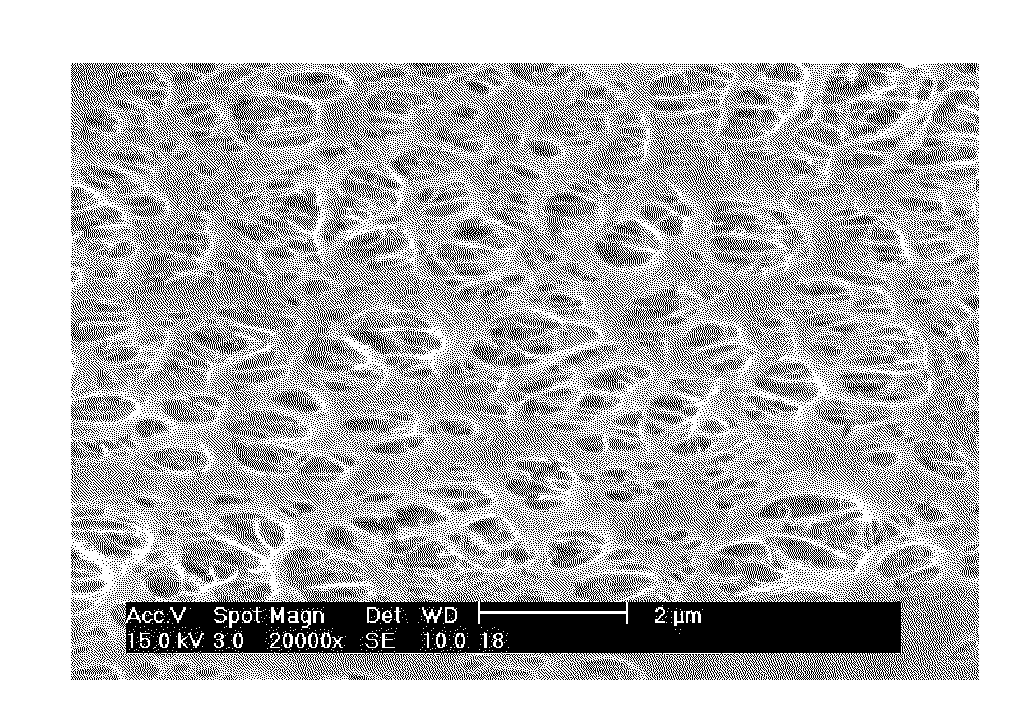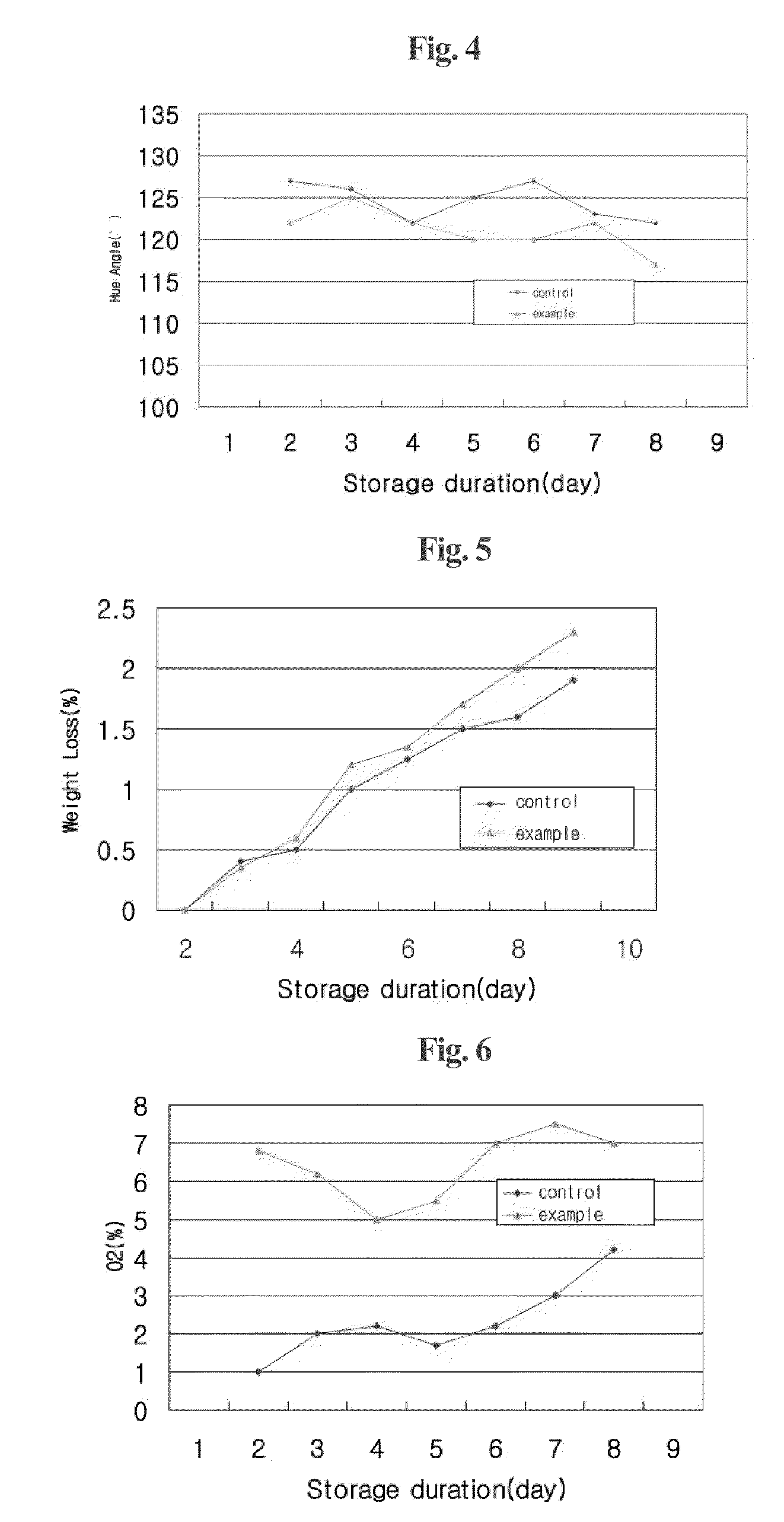Film For Packaging Of Fresh Or Fermentation Food, Packaging Material and Container
- Summary
- Abstract
- Description
- Claims
- Application Information
AI Technical Summary
Benefits of technology
Problems solved by technology
Method used
Image
Examples
example 2
[0066]Crystalline polypropylene, whose density is 0.92 and whose melt index is 0.6 g / 10 min, is melted and extruded through a die of 4 inches, whose discharge hole diameter is 0.04 inch. Afterwards, the extruded result is cooled so as to obtain an unstretched film.
[0067]The extruded film is stretched by 10% at room temperature and then stretched by 10% at −20° C. After that, the result is processed by a hot stretching at 140° C. Afterwards, the film is heat set for 10 min at 140° C.
[0068]The obtained film is tested through the method performed in Example 1, so as to obtain its various characteristics which are described in Table 1.
example 3
[0069]Crystalline polyethylene, whose density is 0.93˜0.96 and whose melt index is 0.5˜1.2 g / 10 min, is melted and extruded through a die of 4 inches, whose discharge hole diameter is 0.04 inch.
[0070]The extruded film is processed by a cold stretching at 25° C., such that its length can be increased by 50% more than its original length. After that, the result is processed by a hot stretching at 115° C. Afterwards, the film is heat set for 5 min at 120° C.
[0071]The obtained film is tested through the method performed in Example 1, so as to obtain its various characteristics which are described in Table 1.
example 4
[0072]An inflation film of HDPE (which is named as HIVOREX, Honam Petrochemical Corp., melting index of 0.5˜1.2 g / 10 min and density of 0.93˜0.96) is obtained, using an inflation molder having a die whose outer diameter is 150 nm u, under a transfer temperature of 190° C. and a discharge speed of 30 m / min. The obtained HDPE film is processed by annealing for 90 min at 126° C. so as to obtain an unstretched film whose crystallinity is approximately 70%.
[0073]The unstretched film is cooled and then stretched using a stretching roll such that its length is increased by 50% more than its original length. Continuously, the film is processed by 300% heat stretching at 110° C. while the film undergoes the stretching state, and then heat set for 5 min.
[0074]The obtained film is tested through the method performed in Example 1, so as to obtain its various characteristics which are described in Table 1.
PUM
| Property | Measurement | Unit |
|---|---|---|
| Pore size | aaaaa | aaaaa |
| Thickness | aaaaa | aaaaa |
| Porosity | aaaaa | aaaaa |
Abstract
Description
Claims
Application Information
 Login to View More
Login to View More - R&D
- Intellectual Property
- Life Sciences
- Materials
- Tech Scout
- Unparalleled Data Quality
- Higher Quality Content
- 60% Fewer Hallucinations
Browse by: Latest US Patents, China's latest patents, Technical Efficacy Thesaurus, Application Domain, Technology Topic, Popular Technical Reports.
© 2025 PatSnap. All rights reserved.Legal|Privacy policy|Modern Slavery Act Transparency Statement|Sitemap|About US| Contact US: help@patsnap.com



